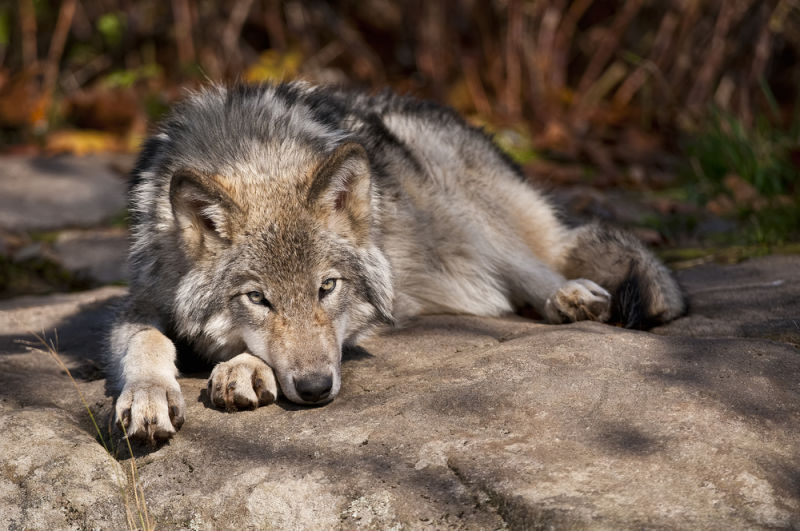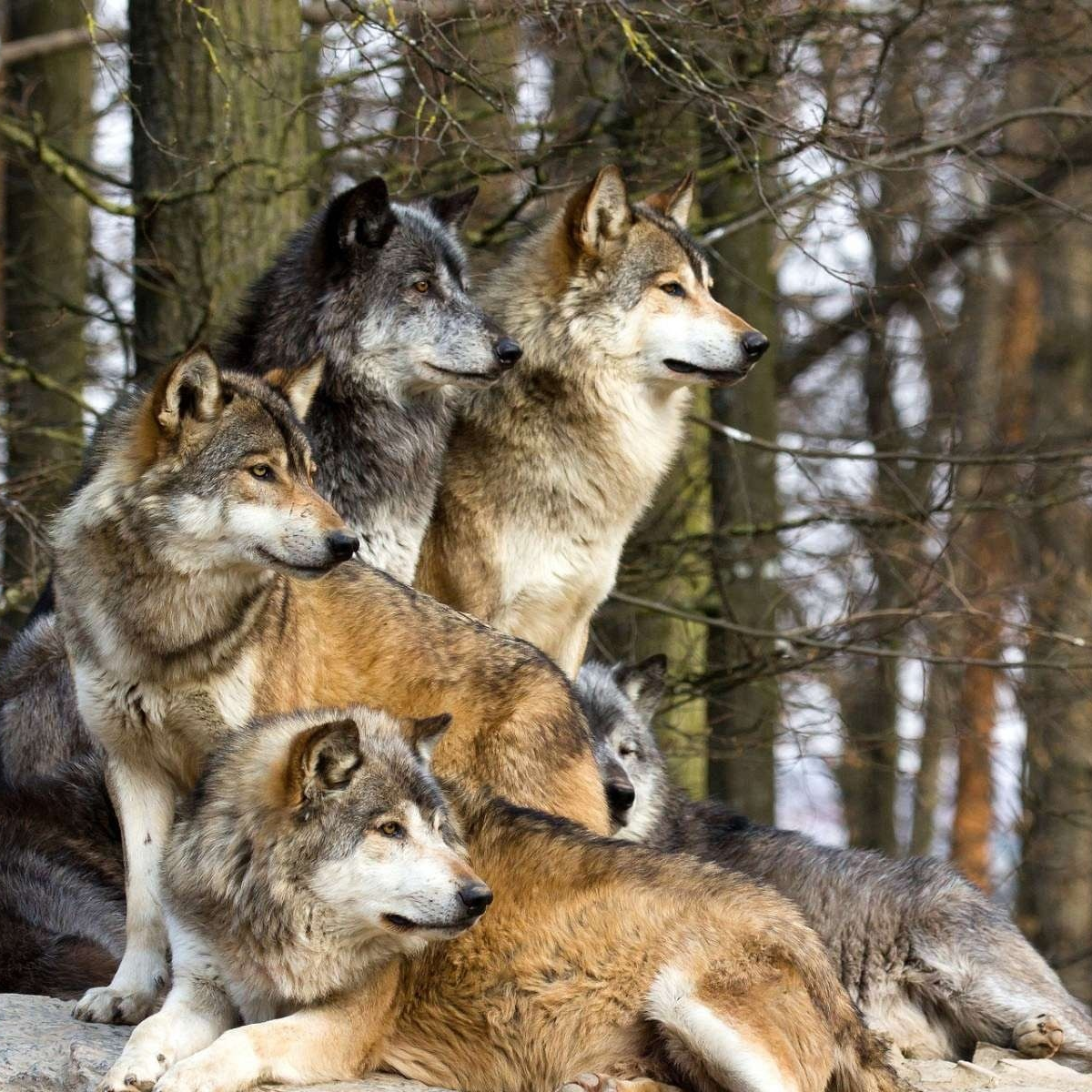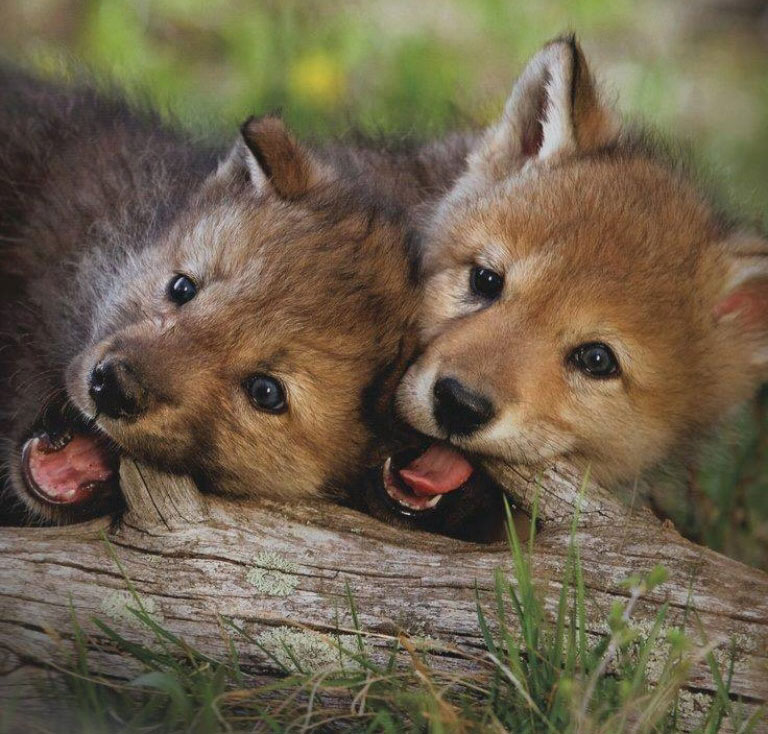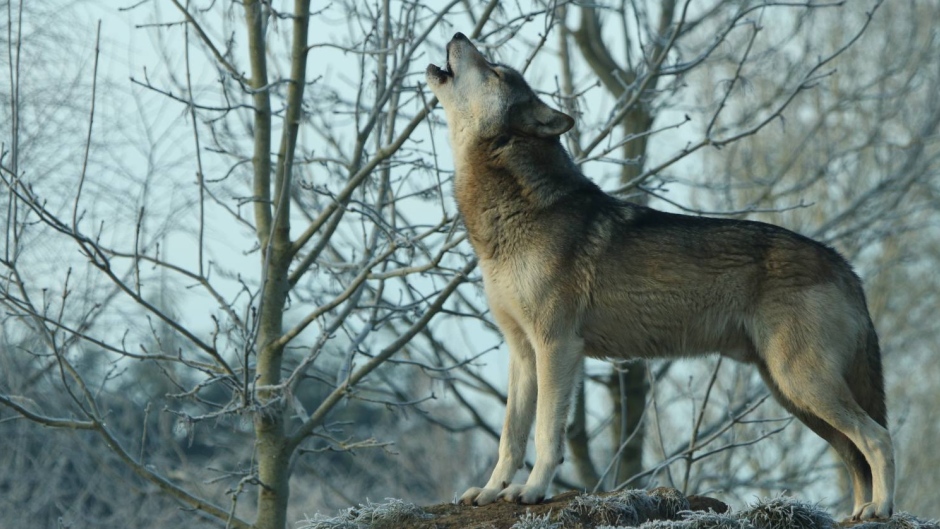Are Wolves the Most Misunderstood Animals?
If you are thinking of getting a wolf as a pet, there are lots of factors to consider.
These include, but are not limited to:
- Legality of ownership
- Identifying reputable sellers
- Assuring health and welfare
- Housing and feeding
- Breeding or not breeding
- Exit plan if it doesn’t work out
Whatever your reasons, before you jump into ownership, check state or federal regulations. You don’t want to invest your time, money and love into a pet to have it taken away from you because of legal issues. Most states ban private ownership of large, undomesticated cat, but it is legal in some states.

Here’s some information about each of these features to help you make an informed decision.
Ownership and the Law
Is it legal to own a wolf in your home state? Get this question answered first when you think about getting this exotic pet.
States not legal to own a Wolf
States Banning Wolves (Canidae species)
- Alaska
- California
- Colorado
- Connecticut
- Georgia
- Hawaii
- Iowa
- Illinois
- Kentucky
- Maryland
- Massachusetts
- New Hampshire
- New Jersey
- New Mexico
- New York
- Oregon
- Tennessee
- Utah
- Vermont
- Washington
- Wyoming
States with Partial Wolf Bans
- Arkansas
- Kansas
- Louisiana
- Michigan
- Minnesota
- Nebraska
- Virginia
States Legal to Own Wolves with Restrictions*
- Arizona
- Delaware
- Florida
- Indiana
- Massachusetts
- Mississippi
- Missouri
- Montana
- North Dakota
- Oklahoma
- Pennsylvania
- Rhode Island
- South Dakota
- Texas
*May require permits, licenses, insurance or other certifications
Gray Area Wolf States
Gray area states may not insist on licenses or permits for owning a wolf but may regulate other aspects.
- Alabama
- Idaho
- Nevada
- North Carolina
- Ohio
- South Carolina
- West Virginia
- Wisconsin
Before you decide to get an exotic pet, it’s smart to check for restrictions.
Where to Buy A Wolf
The best, most reliable place to buy your wolf is from a reputable breeder. You can find such breeders by talking to their satisfied customers. Most breeders should be happy to provide you with a client list and let you choose a few to contact.

Contacting zoos or wildlife experts is another option. Besides helping you find a breeder, they can answer most of your other questions. If your vet accepts wolves as clients, she may be able to connect you with a dependable source.
Finally, if you have friends, family or colleagues who own (or have owned) a pet wolf, ask for a recommendation.
Health and Welfare
How will you care for your pet wolf if he gets sick? What if there is an emergency and you need a professional to help you? It’s safer for your pet, and less stress for you, if you do your homework up front, to find a vet who can manage his health. If you already have a vet you like who can’t care for him, ask for a referral to someone who can.
Helping your pet adjust to life in captivity is important. The traits linking them to dogs also make it difficult to make the transition from wild animal to pet. For example, pleasing humans does not motivate them. This makes them difficult to tame.
Providing enrichment activities, periodic treats, and access to sturdy chew toys alleviates boredom. If your wolf is leash trained, she may enjoy a regular walk to stimulate her mind and innate curiosity. These are a few ways to acclimate your pet to her new environment.
Housing A Wolf
Housing is a major consideration as your pet needs lots of room to roam and to exercise. The amount of enclosure space needed depends on how many wolves you own. A study done by Mission.Wolf recommends at least ½ acre per wolf. So, to house two wolves, you’ll need at least an acre of land. For the best environment for a long, healthy life, it’s better to provide the largest space possible.
Some other housing requirements to consider are:
- Avoiding high traffic/noise areas which could stress your pet
- Strong fencing (consider electrified) at least eight feet high*
- Double gates, at least six feet high, for the enclosure
- Shelter for protection from the elements *to deter jumping or climbing the fence to escape
Wolves are cunning and learn by observing others. This means your pet may become an expert escape artist. So, planting trees in or close to their housing isn’t a good idea. For their safety, and the safety of others, you should always know your pet’s location. A microchip or GPS tracking device can help with this.
What Does a Wolf Eat?
Diet is a factor; wolves can be expensive to feed. As natural carnivores, raw meat makes up the bulk of their diet. Some of their favorite foods in the wild are elk, deer or small prey. It might be hard to find (or to afford) these specialty meats. Some readily available choices are chicken, beef or turkey.
Most adults need two to five pounds of meat daily. Be cautious about removing your pet’s food; he may try to defend it.
They also need raw bones, which are a rich source of calcium, and you may have to give them mineral supplements. Add in some type of vegetation, like grass, and an occasional treat of fresh fruit. Caring for an exotic pet can be more challenging than caring for other pets. Consider partnering with a qualified veterinarian to plan a healthy diet.
Wolves cannot sweat. They need plenty of fresh water to compensate for that inability. Besides drinking water, they need water for bathing and swimming. Remember, wolves are stronger than dogs. Therefore, put their drinking water in a container that can’t be knocked over or carried away and buried.
To Breed or Not to Breed
Deciding whether to breed your pet is a big decision. If you do, will you breed it with another wolf or with a dog? Because they are interfertile, it’s possible for these species to mate. But, just because it is possible does not mean it is a good idea.

Pups from wolf-on-wolf breeding display wolf-like characteristics, appearances and behaviors. This is because the gene pool is pure; all their DNA contains wolf genes. They are still unpredictable. But, you can make informed assumptions about their future behaviors.
If you breed a wolf with a dog, the pups are hybrids. Their percentage of wolf genes influences their characteristics and behaviors. Thus, predicting their behaviors or temperaments is difficult because of the mixed genes. These are important factors to consider when deciding whether to breed your pet.
What Makes Wolves Unique Pets
One reason wolves are unique pets is their familial connection to domestic dogs. Research shows the DNA of dogs and wolves is almost identical. In behavior and characteristics, dogs and wolves are almost mirror images:
- Devoted to their pack
- Highly social
- Capable of learning
- Capacity for emotion
- Loyal and loving
- Smart
The irony of this situation is dogs are adored; wolves are feared.
These similarities also make it difficult for them to be good pets. Wolves are not motivated to please their humans, which makes them difficult to tame. Because they are so similar to dogs, owners may not understand this stubbornness and become frustrated.
Socializing and Training Wolves
Be patient. Unlike dogs, wolf pups have a short socialization window: about 19 days. The sooner you start working with your pup, the better. In general, wolves respond better to hand signals than vocal commands. Rewards and positive reinforcement techniques also work well with them.
Isolate pups from adult wolves and canines for the first quarter of their lives. This way, they can imprint properly with you. Surprisingly, for animals with an unwarranted reputation for ferociousness, wolves are shy. They may avoid eye contact or refuse to listen to you. Strangers may frighten them, so be careful about introducing them to others. Wolves, especially males, may try to dominate you. Some warning signs to watch for are:
- Bared teeth
- Raised hackles
- Flattened ears
Are you having trouble socializing your pet? You may want to get help from a professional animal handler or other qualified expert.
Pack Life
Understanding pack life and wolf behaviors help you understand your pet. Wolves are social, so your pet should have a companion to meet its emotional needs. Larger, strong dog breeds such as German shepherds or Rottweilers can co-exist with wolves. Careful, planned introductions are key.
Of course, another wolf is the perfect companion. Yet, according to Mission.Wolf, more than four wolves living together may cause turf wars. Balance is the key.
Wolves are devoted to their families and form lifelong bonds with other wolves. The adults teach the juveniles to hunt and to survive. Juveniles may stay with their original packs for life or strike out on their own and form new packs.
This tendency to find mates and to establish new packs keeps the gene pools diversified. Dispersers is the term for those that leave the pack to form new families.
Packs care for older wolves. A pack consists of a breeding pair called an alpha male and an alpha female. Like human families, the alpha male controls the pack and makes decisions like who eats first. Other members support the family in various roles. Other important family roles are betas (usually older siblings) and current year pups.
Ecosystem Role
Wolves maintain a healthy balance of prey and predator in nature. Often referred to as keystone species, removing them from an ecosystem disrupts the balance. The story of the Yellowstone wolves illustrates the harmful results of their extermination from an area.
How Wolves Saved Yellowstone
By 1926, wolves were eradicated from Yellowstone National Park. Without the presence of a natural enemy such as the wolf, the elk and deer population exploded. Because they had few enemies, they overgrazed the vegetation, which led to erosion. They became an out of control nuisance. Relocating them slowed the ecosystem’s damage but did not solve the problem.
The reintroduction of wolves into Yellowstone restored the ecosystem in several ways:
- They removed sick or elderly prey from the ecosystem
- Killing their typical prey of large animals balanced the system
- Their leftover, uneaten carcasses fed other scavengers
- By changing the habits of other prey, the necessary vegetation and small prey returned to the system
- Coyote populations were kept in check
Wolf Folklore and Interesting Facts
Wolves have a bad reputation but is it undeserved? Let’s look at three common myths about them and see if we can debunk them.

Myth: Wolves are bloodthirsty predators seeking to devour livestock and poultry. It’s true in that in the past, the rapid settlement of America disrupted the ecosystem and forced them to find other food sources such as livestock. Today, National Geographic’s “Gray Wolf Educator Guide” states: ”Less than one percent of all the livestock in the U.S. that die before going to market are lost to wolves.”
Myth: Wolves are a threat to humans. Left alone in their natural habitats, wolves pose little to no harm to humans. Humans may be a bigger threat to them. Encroaching on their territories or hunting them without a license endangers them.

Myth: Wolves howl at the moon. Well, they might. But, they might not, depending on how they feel. This is the most common, and most inaccurate, myth about wolves. They use howls in various ways such as:
- Attracting a mate
- Rounding up the pack
- Signaling danger
- Marking their territory
For them, howling is like human speech. It’s the way they exchange information with each other.
Endangered Species Status
As mentioned earlier, wolves became endangered due to population growth in the U.S. and lack of natural food sources. Recovery plans to reintroduce/protect the remaining wolves were implemented in the 20th century.
According to the U.S. Fish and Wildlife Service, wolves have been successfully reintroduced into the Rocky Mount region, Alaska, Canada, and the western Great Lake states. Some of those species include:
- Rocky Mountain wolves (Yellowstone National Park, Central Idaho, and northwestern Montana)
- Mexican Gray wolves
- Red Wolves
Exit Plan
Regardless of the pet, sometimes pet ownership doesn’t work out. Owners and pets may not be compatible. Taking care of the pet may be overwhelming or too expensive.
Exotic pets like wolves can be unpredictable. What will you do if your pet becomes aggressive or you can no longer care for it? One option is to work with a sanctuary or organization that rescues or saves wolves. They may be able to rehome the animal.
The overcrowding in many such facilities limits their abilities to help. A more humane solution is to think long and hard about the demands of pet ownership. You are responsible for your pet’s social, physical and emotional needs for a lifetime.
Whatever you decide to do, if you are unable to keep your wolf, do not release it into the wild. Pet wolves have become dependent on humans for food, affection and shelter. Left to fend to for themselves, they could starve to death or be killed.







